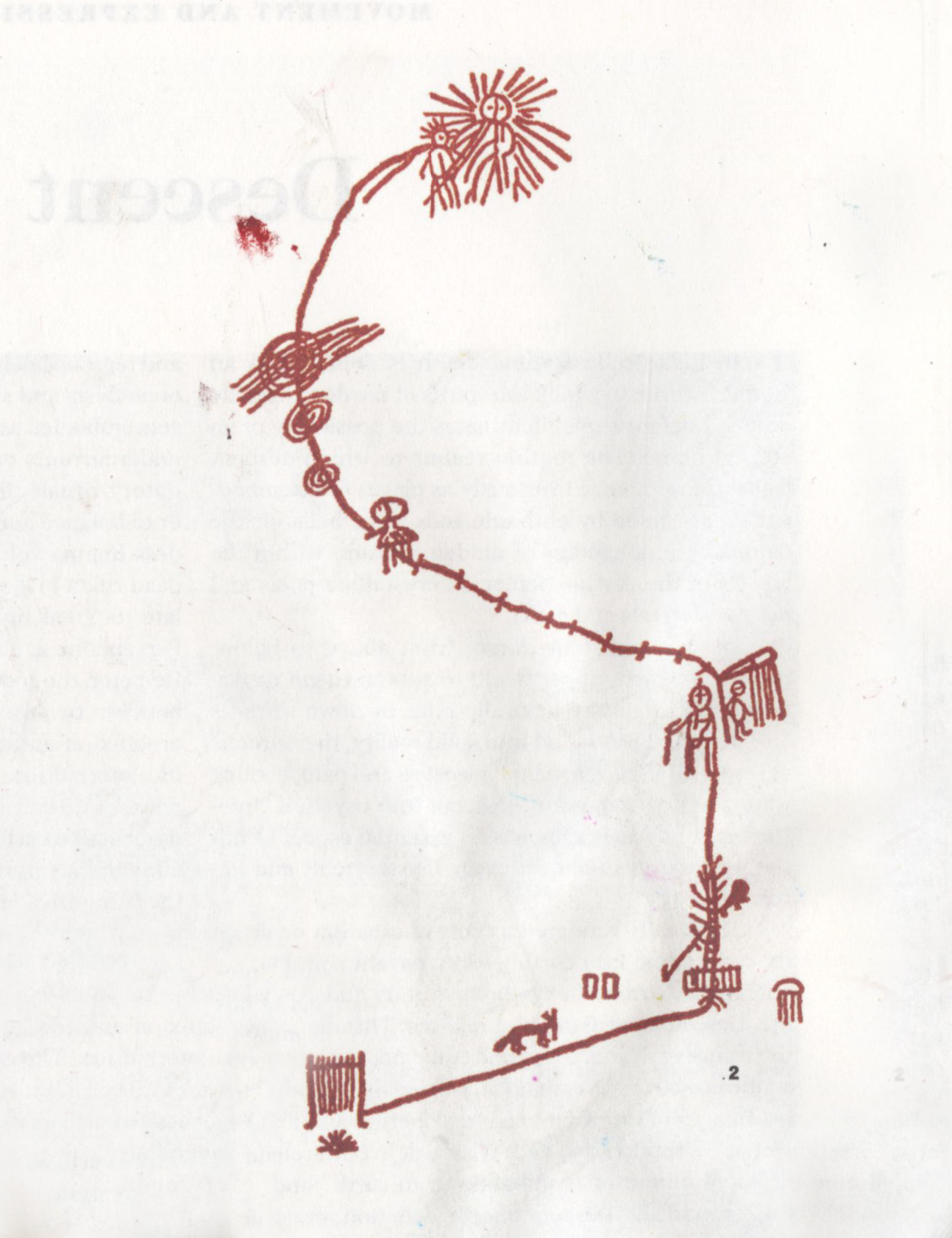Ohio River is a redundant name, Ohio being derived from the Iroquois word Ohi-yo’ meaning good river or great river.
I grew up on a hill in the American Midwest.
From my back porch I could see the intersection of Ohio, Kentucky, and Indiana.
I could see where the Ohio river bent behind Kentucky’s forested hills, and the perpetual cloud billowing from a local power plant.
The Ohio River Valley is one of those valleys that looks back at you, swimming channels in your eyes (histoplasmosis).
My brother once set his histoplasmostic eyes on a twilight bush and took it for a Hyena. However, all Ohio hyenas live in zoos, with their names frozen on display plates. There are native coyotes though, as wild and hidden as the wind.
You’ll hear them howl something mad at night, and spot their paw prints scrawled across blue clay, but you won't seem them.
Ryan Strochinsky
Preface

Transmigratory Gesture
trans·mi·grate (trăns-mī′grāt′, trănz-) v.
1. To migrate.
2. To pass into another body after death. Used of the soul.
ges·ture (jĕs′chər) n.
1. a. A motion of the limbs or body made to express or help express thought or to emphasize speech.
b. The action of making such a motion or motions: communicated solely by gesture.
To the sensitive eye, metaphoric and actual expressions of the Transmigratory gesture can be spotted everywhere from roadkill to elevators
Despite its relation to the ideas of ascension and descension The transmigratory gesture is not hierrachorl, polar or for that matter lateral, but rather, belongs to the class of ebbs and flows-- of furlings and unfurlings.
The contemplator, one example, curls around their innermost pit, finding themself so far in as to be far-out. In the non-human order the Transmigratory gesture is most easily discernible in trees, both in their subterranean sprawling, and overhead in sky-ward yearnings.
In painting we may see the Transmigratory gesture in the contorted tippy-toes of el greco’s saints, or in a siberian shaman’s map detailing his climb up the nine branches of the world tree. The transmigratory gesture is both violently destructive & abundantly generative. It is Possibly Ecstatic, introspective, or painful, but certainly of change and always changing
1. To migrate.
2. To pass into another body after death. Used of the soul.
ges·ture (jĕs′chər) n.
1. a. A motion of the limbs or body made to express or help express thought or to emphasize speech.
b. The action of making such a motion or motions: communicated solely by gesture.
To the sensitive eye, metaphoric and actual expressions of the Transmigratory gesture can be spotted everywhere from roadkill to elevators
Despite its relation to the ideas of ascension and descension The transmigratory gesture is not hierrachorl, polar or for that matter lateral, but rather, belongs to the class of ebbs and flows-- of furlings and unfurlings.
The contemplator, one example, curls around their innermost pit, finding themself so far in as to be far-out. In the non-human order the Transmigratory gesture is most easily discernible in trees, both in their subterranean sprawling, and overhead in sky-ward yearnings.
In painting we may see the Transmigratory gesture in the contorted tippy-toes of el greco’s saints, or in a siberian shaman’s map detailing his climb up the nine branches of the world tree. The transmigratory gesture is both violently destructive & abundantly generative. It is Possibly Ecstatic, introspective, or painful, but certainly of change and always changing
Statement
I am interested in acts of transformation, and in the residue of those acts: sounds, fingerprints, shifts in pressure, memories, or revenants.
My subject is the nearly invisible—my approach is not to depict but to resound--to resound the spirit in the medium.

My subject is the nearly invisible—my approach is not to depict but to resound--to resound the spirit in the medium.
